NitroX
|
| (.700 member) |
| 28/01/23 02:05 PM |

|
|
|
https://www.thefield.co.uk/shooting/forging-damascus-steel-barrels-the-rarest-of-skills-48639
Forging damascus steel barrels – the rarest of skills
The Field January 6, 2023
0
shares
Painstakingly made and beautifully patterned, damascus barrels are a striking example of the gunmaker’s art, but such skills have been lost to the tide of progress says Simon Reinhold
***
Forging damascus steel barrels – the rarest of skills
The Field January 6, 2023
0
shares
Painstakingly made and beautifully patterned, damascus barrels are a striking example of the gunmaker’s art, but such skills have been lost to the tide of progress says Simon Reinhold
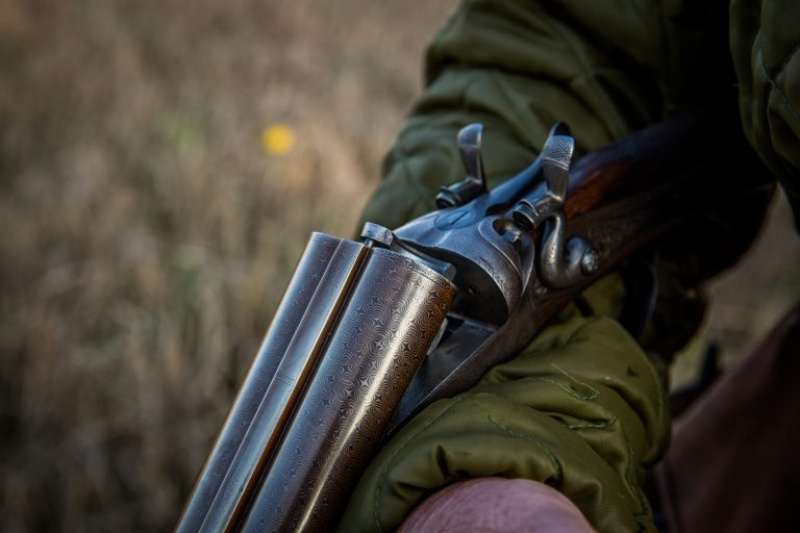
damascus steel
TAGS:
ITS SINUOUS beauty is the essence of the gunmaker’s art, although some regard it as an obsolete technology fit for nothing more than blackpowder. Damascus steel barrels are widely misunderstood and quickly divide opinion. Today the highly skilled, traditional art of making quality damascus barrels has been all but lost. The few companies that still produce damascus guns (James Purdey & Sons is one) do so using an entirely different method. Not only that, but other than a passing visual resemblance, traditional damascus barrels were made using a different process to original damascus steel, famed for its sword-making attributes.
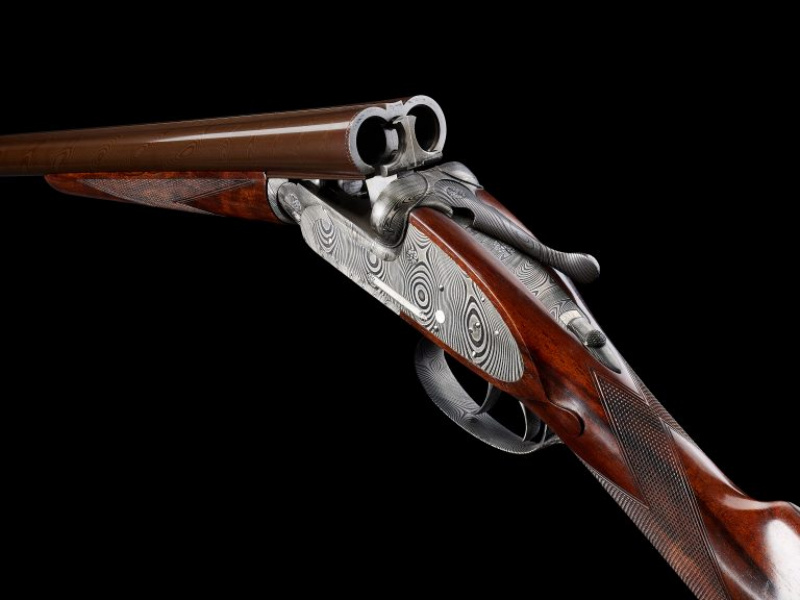
Early damascus steel use
Damascus steel was the product of early armourers’ attempts to get two seemingly incongruous, desired properties into their sword blades: flexibility and resistance to fracture; and hardness and the ability to hold an edge. They did this by varying the carbon content of the metal during the process of turning base ore into steel. Our modern familiarity with consistent-quality steel as a cheap, widely employed material is a world away from the raw materials early sword makers beat into submission. The original damascus steel blades were the finished product of Wootz steel ingots imported by Arab traders from Tamil Nadu and Kerala in southern India.
The patternation on the finished blades, which is our visual connection to more modern barrel making, was the result not only of the crucible steel production process (imagine a small furnace in a village workshop in the eighth century) but the specific ore itself. Modern attempts by archaeological historians to replicate the process have largely failed because the recipe of other ingredients put into the furnace to add carbon to the iron, and thus gain the magical properties of steel, is unknown. The very first ores used to create steel were those found in nickeliron meteorites – a true gift from the heavens. The desirability of these high-quality blades was most likely first noticed on the battlefield in the Crusades, a medieval expo but with a far higher body count.
Western European infantry had faced patternated blades before from the Vikings, but this is where the crucial difference lies: the laying of strips of iron and steel and forging of these strips together under heat and hammer – pattern welding – that the Vikings employed is largely the same technique used to produce the material that gun barrels are made of. By 1570, the Mughals had begun pattern welding gun barrels, and by 1600, the technique had reached the Ottoman Empire.
In 1683, the defeat of the Turks at the Siege of Vienna meant thousands of pattern-welded gun barrels were available for examination as they were surrendered by the vanquished army and recovered from the battlefield. Although the two techniques of producing damascus weapons were very different, William Greener, writing in Gunnery in 1858, noted that examining rare examples of barrels produced by Wootz steelworkers, he found that only the surface layer was Wootz steel, the underlying layers being “commonest iron”. While he took this as a sign the mines then produced too little raw material for barrel making, similar ‘veneering’ was later to be used by those trying to pass off poor-quality barrels as higher grade.
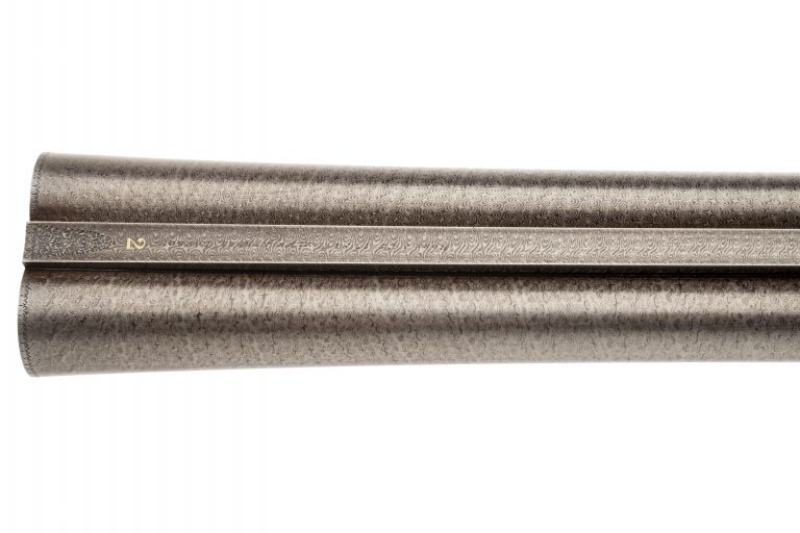
damascus steel
How to forge damascus steel barrels
Remarkably for a technique that has been lost, film exists of the production of damascus barrels. It is available on YouTube, and if you have made it this far into the subject, then I urge you to seek it out. In it you will see Belgian barrel makers working in Nessonvaux at the end of the 19th century for MJ Delcour Dupont, one of the last master barrel makers. Watching the master barrel makers at work, you get a sense of why this tradition may never be recreated – the skill, experience and eye it took to produce the finest damascus barrels were the product of generations of knowledge.
First, the rods of steel are examined for their properties before being heated and placed into a clamp. One end of the rod is bent to facilitate this and the other end is attached to a rotating handle – the rod is then twisted and the rate of twist is controlled by the senior barrel maker, with cold water applied to any parts that are twisting too quickly. The bellows are pumped and the heat applied again to two or three similar rods. These are then forge-welded together by heating and hammer. The English gunmakers, says WW Greener in The Gun and its Development, never used more than three rods, three being the right combination of beautiful pattern and inherent strength.
WW Greener went on to describe Belgian damascus barrels as very “beautiful” but “weak”, and while he was remarkably consistent in reserving his greatest compliments for himself, and never anyone else in gunmaking, in this he may have had a point. The over-twisting of too many rods, in his opinion, meant that the “fibres of the steel and iron intermingled may [not] support each other when the strain of the explosion has to be borne by the barrel”. Three-iron damascus was preferred over and above even silver steel damascus, so-called as it included more expensive, higher-quality steel rods in the riband.
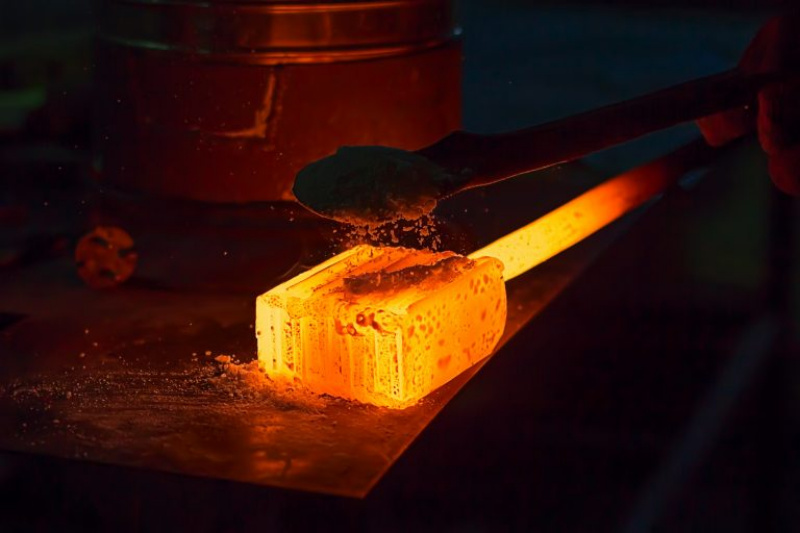
damascus steel
Glowing iron ingot on the table. Hot metal workpiece for the manufacture of damascus steel.
As the rods are forged together, the riband created is tested with a gauge for thickness and uniformity. Then the long cylindrical rod that the riband will be wrapped around (the mandrel) is hammer-wrapped first in the chemise, a thin layer of tin that one assumes is to make the removal of the rod for the raw barrel easier. The mandrel is then assembled with a round block that has a stub protruding forward that grips one end of the riband to bend it around the core of the mandrel and form the rough barrel as the mandrel and riband are drawn towards the barrel maker. The riband is usually twisted cold by English barrel makers, but the Belgians twist after heating a specific section. The rough barrel is then welded and shaped, being heated and hammered as they go.
The anvil they use for this has a series of halfpips cut into it to shape the breech section and the main bore of the barrel. Octagonal sections of barrels that we often see in single-barrelled fowling guns also take shape here in a half-pipe of that shape in which they hammer the hot damascus tube. Watching the process, one sees two artisan barrel makers completely in tune with each other’s work. Each of their blows and movements is fast yet precise – there is no wasted effort.
The master with his small hammer shows where his colleague’s larger hammer must fall. After the main bore is welded and shaped, the thicker breech end is tackled in a larger groove on the anvil. Once the process is complete, the maker adds his mark and the barrel goes for grinding, reaming out and polishing before being sold on to the gunmaker. It was all but impossible to straight bore a steel rod to create a barrel of any length given the tools of the time. This was the preferred solution.
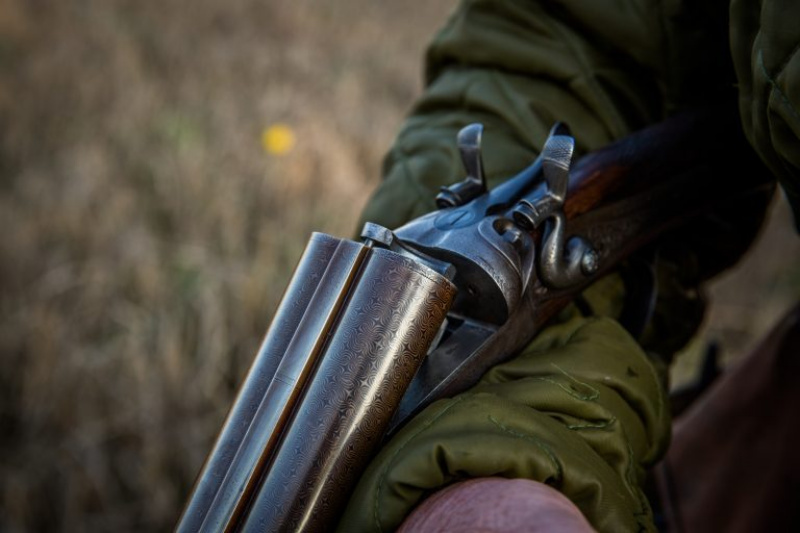
damascus steel
Barrel making
Barrel making was such a specialised craft that even the best London gunmakers would buy barrels in from their favoured specialists, whose work they trusted. Boss & Co used men such as Thomas Parkin and John Portlock, the leading barrel makers of their time. Specialist artisans could be assured of work until technological progress in gunmaking brought an end to the alchemy of even the best barrel makers. Two connected advances sealed the fate of the damascus barrel.
The first was the development of choke boring. It was discovered that the addition of some muzzle constriction, or choke as we now know it, could tighten up the pattern thrown by a barrel and improve the effective range of a gun and cartridge combination. In tests that mirrored those conducted by the Proof House on damascus barrels to find out which was superior, English threeiron or ‘foreign’ barrels, the then editor of The Field, John Henry Walsh, organised trials in 1875 to see if choke-bored barrels were better than true cylinder barrels.
The results were conclusive and choke became the new fashion. It coincided with one of the outstanding inventors and engineers of his time, Sir Joseph Whitworth, solving the issue of turning molten steel into barrels that were uniform, consistent quality and free of air pockets that formed when the steel cooled. By cooling the liquid steel under pressure, the air was reliably forced out, and ‘Sir Joseph Whitworth’s Fluid Pressed Steel’ was such a success that that inscription often appears alongside the gunmaker’s name on the barrels of some of the best-known makers in the world. Not only were the new all-steel barrels stronger, but they were also lighter, and the zenith of British gunmaking was within sight; the perfectly balanced, fast-handling, sidelock or trigger-plate, hammerless ejector capable of firing the new ‘smokeless’ powders and killing at range.

Modern damascus steel
One of the few damascus guns in production today lends a new twist to the centuries-old technique. James Purdey & Sons launched its all-damascus gun in 2007 and it remains its most expensive model. One reason is the powder steel specialist alloy that is created in Sweden by Damasteel. It is the highest-quality steel available anywhere, but the technology and ordering time for a single billet of this beautiful material, and the fact that only a specialist French tube-making company can apply the twist required, increases the price significantly.
The barrel twist itself was a problem, as Purdey required a spiral clockwise for the right tube and anti-clockwise for the left. The request that the French put their machine in reverse to accomplish something they have never before been asked to do was only accepted once a guarantee had been received that if it smashed the machine, Purdey would buy them a new one. According to Purdey’s then factory manager, the gun is 40% more durable than the normal steel used in the action body and barrels of most guns, and the final forging process imparts a tensile strength three times higher as well.
Although making finely figured damascus out of powder alloys is far removed from the processes of the past, the aim is the same – a visually striking, consistent-quality material able to withstand the rigours of explosive pressures over many decades of hard use. Traditional damascus is no longer an option as the skills have been drowned by the tide of progress, and the Swedish Damasteel that Purdey employs is simply too expensive for the majority of gunmakers unless they have a client looking for the best, whatever the cost.
Now is probably the time to confess: I shoot my game with a 152-year-old damascus-barrelled hammergun made by John Dickson & Son. It is a testament to the skill of the men who built it – without CNC, the ability to examine the crystalline structure of the metal, or modern material traceability – that it is still doing the job it was made for all these years later. Perhaps it is time for a Damascene conversion.
With thanks to Holts Auctioneers for its assistance with this article.